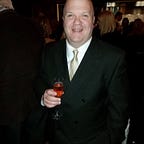Permutations and possibilities in your art work
Art & Fear, David Bayles & Ted Orland, pg 73 “The tricky part is finding the right yardstick for measing your accomplishments. What makes competition in the arts a slippers issue is simply that there’s rarely any consensus about what your best work is. Moreover, what’s important about each new piece is not whether it is better or worse than your previous efforts, but the ways in which it is similar or different. The meaningful comparison between two Bach fugues is not how they rank, but how they work…It can even be argues that you have an obligation to explore the possible variations, given that a single artistic question can yield many right answers. Productive times encourage you to build and extended body of work, one where all the pieces (even flawed sketches that will never see the gallery wall) have a chance to play.”
Over the past two years I have done several series of drawings and then paintings based upon the highlighted idea from Art & Fear. Each series explored an idea, building off the previous ideas which were worked out in the previous piece. In spring 2016 I did a series of Jackson Pollock like paintings with splattered colors of paint on white canvases of various sizes. Last spring I did a series of Sharpie ink and watercolor paintings on canvas which explored line and circle combinations while coloring in the painting with various water color pencils that were then blended. I also did a series of abstract drawings in pencil and various grades of charcoals that were similar to the black and white drawings shown here, except they were reversed coloration. In the series of four drawings which are displayed here, I explored the idea of using black paper and white lines for the drawing, which is the reverse of the norm, namely white paper with grey/black lines. I added color to make the composition interesting. Each series can be compared and contrasted in how they are different and how they are similar. What theme does each series explore, and what elements does each series share from previous series, if any. Some series have very little in common with each other, others have many things in common with each other.
As noted in the quote from Art & Fear this series is clearly different from the other work that I have done. It can not be compared with other series of drawings and paintings that I have done except for in noting how it is different from my other work. It is very different than anything that I did with iconography for the past 22 years, and is even different than the other few series of work that I did last spring and in 2016. The one piece in this work that can be directly compared with other series that I did last spring is the fourth drawing which has a pattern in it which I repeated in several of my drawings last spring. The only other way in which this series can be contrasted has already been noted, in that it is a reverse of the series which I was working on at roughly the same time, which used white paper with pencil and charcoal lines. Otherwise the pieces in this series can only be compared and contrasted with each other, and also in how they completely differ from other series of drawings and paintings that I have done.
Within this series, just as in the similar series done on white paper with pencil and charcoal, I explore the relationship and rhythm of lines and shapes. The lines are varying thicknesses and fluctuate between curved and straight lines. The lines create negative space in relation to the other lines in the nearby shapes as well as with the edge of the paper. In doing this I explored rhythm in the pieces. In three of the drawings there are multiple shapes in the drawing and the lines which define each shape show a rhythm with the lines of the other shape. Even in the drawings that have only one shape in them, the lines still show a rhythm in how they interact with the other lines of the shape. Finally the colors in each drawing show an interaction with each other color. The colors were each carefully chosen for what they would add to the piece.
I have not even begun to explore the permutations and possibilities that this series or any other series of work that I have done can produce. And yet I hope I have given a little insight into what I was thinking with this series and how to compare and contrast an artists work with his/her other work.
